 Tìm kiếm
Tìm kiếm
Chương 1 Luật đất đai 2013: Quy định chung
| Số hiệu: | 45/2013/QH13 | Loại văn bản: | Luật |
| Nơi ban hành: | Quốc hội | Người ký: | Nguyễn Sinh Hùng |
| Ngày ban hành: | 29/11/2013 | Ngày hiệu lực: | 01/07/2014 |
| Ngày công báo: | 31/12/2013 | Số công báo: | Từ số 1011 đến số 1012 |
| Lĩnh vực: | Bất động sản, Giao thông - Vận tải | Tình trạng: | Hết hiệu lực |
TÓM TẮT VĂN BẢN
Tăng thời hạn 30 năm giao đất nông nghiệp
Cuối tháng 11 vừa qua, Quốc hội đã ban hành Luật Đất đai 2013 với nhiều điểm mới so với Luật Đất đai 2003.
Một trong những điểm nổi bật đó là trong phần quy định giao đất, Luật mới đã không phân chia đất trồng cây lâu năm và đất trồng cây hằng năm.
Theo đó, thời hạn giao đất cho hộ gia đình, cá nhân trực tiếp sản xuất nông nghiệp được tính chung là 50 năm; trường hợp thuê đất thì thời hạn tối đa không quá 50 năm.
Thời hạn đất được giao cho tổ chức sản xuất nông lâm nghiệp, nuôi trồng thủy sản và nhằm mục đích thương mại, đầu tư… là không quá 50 năm.
Riêng các dự án vốn đầu tư lớn nhưng chậm thu hồi, dự án đầu tư vào địa bàn khó khăn thì thời hạn giao đất không quá 70 năm.
Luật Đất đai số 45/2013/QH13 sẽ có hiệu lực thi hành từ ngày 01/07/2014.
Văn bản tiếng việt
Văn bản tiếng anh
Luật này quy định về chế độ sở hữu đất đai, quyền hạn và trách nhiệm của Nhà nước đại diện chủ sở hữu toàn dân về đất đai và thống nhất quản lý về đất đai, chế độ quản lý và sử dụng đất đai, quyền và nghĩa vụ của người sử dụng đất đối với đất đai thuộc lãnh thổ của nước Cộng hòa xã hội chủ nghĩa Việt Nam.
Trong Luật này, các từ ngữ dưới đây được hiểu như sau:
1. Thửa đất là phần diện tích đất được giới hạn bởi ranh giới xác định trên thực địa hoặc được mô tả trên hồ sơ.
2. Quy hoạch sử dụng đất là việc phân bổ và khoanh vùng đất đai theo không gian sử dụng cho các mục tiêu phát triển kinh tế - xã hội, quốc phòng, an ninh, bảo vệ môi trường và thích ứng biến đổi khí hậu trên cơ sở tiềm năng đất đai và nhu cầu sử dụng đất của các ngành, lĩnh vực đối với từng vùng kinh tế - xã hội và đơn vị hành chính trong một khoảng thời gian xác định.
3. Kế hoạch sử dụng đất là việc phân chia quy hoạch sử dụng đất theo thời gian để thực hiện trong kỳ quy hoạch sử dụng đất.
4. Bản đồ địa chính là bản đồ thể hiện các thửa đất và các yếu tố địa lý có liên quan, lập theo đơn vị hành chính xã, phường, thị trấn, được cơ quan nhà nước có thẩm quyền xác nhận.
5. Bản đồ hiện trạng sử dụng đất là bản đồ thể hiện sự phân bố các loại đất tại một thời điểm xác định, được lập theo từng đơn vị hành chính.
6. Bản đồ quy hoạch sử dụng đất là bản đồ được lập tại thời điểm đầu kỳ quy hoạch, thể hiện sự phân bổ các loại đất tại thời điểm cuối kỳ của quy hoạch đó.
7. Nhà nước giao quyền sử dụng đất (sau đây gọi là Nhà nước giao đất) là việc Nhà nước ban hành quyết định giao đất để trao quyền sử dụng đất cho đối tượng có nhu cầu sử dụng đất.
8. Nhà nước cho thuê quyền sử dụng đất (sau đây gọi là Nhà nước cho thuê đất) là việc Nhà nước quyết định trao quyền sử dụng đất cho đối tượng có nhu cầu sử dụng đất thông qua hợp đồng cho thuê quyền sử dụng đất.
9. Nhà nước công nhận quyền sử dụng đất là việc Nhà nước trao quyền sử dụng đất cho người đang sử dụng đất ổn định mà không có nguồn gốc được Nhà nước giao đất, cho thuê đất thông qua việc cấp Giấy chứng nhận quyền sử dụng đất, quyền sở hữu nhà ở và tài sản khác gắn liền với đất lần đầu đối với thửa đất xác định.
10. Chuyển quyền sử dụng đất là việc chuyển giao quyền sử dụng đất từ người này sang người khác thông qua các hình thức chuyển đổi, chuyển nhượng, thừa kế, tặng cho quyền sử dụng đất và góp vốn bằng quyền sử dụng đất.
11. Nhà nước thu hồi đất là việc Nhà nước quyết định thu lại quyền sử dụng đất của người được Nhà nước trao quyền sử dụng đất hoặc thu lại đất của người sử dụng đất vi phạm pháp luật về đất đai.
12. Bồi thường về đất là việc Nhà nước trả lại giá trị quyền sử dụng đất đối với diện tích đất thu hồi cho người sử dụng đất.
13. Chi phí đầu tư vào đất còn lại bao gồm chi phí san lấp mặt bằng và chi phí khác liên quan trực tiếp có căn cứ chứng minh đã đầu tư vào đất mà đến thời điểm Nhà nước thu hồi đất còn chưa thu hồi được.
14. Hỗ trợ khi Nhà nước thu hồi đất là việc Nhà nước trợ giúp cho người có đất thu hồi để ổn định đời sống, sản xuất và phát triển.
15. Đăng ký đất đai, nhà ở, tài sản khác gắn liền với đất là việc kê khai và ghi nhận tình trạng pháp lý về quyền sử dụng đất, quyền sở hữu nhà ở, tài sản khác gắn liền với đất và quyền quản lý đất đối với một thửa đất vào hồ sơ địa chính.
16. Giấy chứng nhận quyền sử dụng đất, quyền sở hữu nhà ở và tài sản khác gắn liền với đất là chứng thư pháp lý để Nhà nước xác nhận quyền sử dụng đất, quyền sở hữu nhà ở, tài sản khác gắn liền với đất hợp pháp của người có quyền sử dụng đất, quyền sở hữu nhà ở và quyền sở hữu tài sản khác gắn liền với đất.
17. Thống kê đất đai là việc Nhà nước tổng hợp, đánh giá trên hồ sơ địa chính về hiện trạng sử dụng đất tại thời điểm thống kê và tình hình biến động đất đai giữa hai lần thống kê.
18. Kiểm kê đất đai là việc Nhà nước tổ chức điều tra, tổng hợp, đánh giá trên hồ sơ địa chính và trên thực địa về hiện trạng sử dụng đất tại thời điểm kiểm kê và tình hình biến động đất đai giữa hai lần kiểm kê.
19. Giá đất là giá trị của quyền sử dụng đất tính trên một đơn vị diện tích đất.
20. Giá trị quyền sử dụng đất là giá trị bằng tiền của quyền sử dụng đất đối với một diện tích đất xác định trong thời hạn sử dụng đất xác định.
21. Tiền sử dụng đất là số tiền mà người sử dụng đất phải trả cho Nhà nước khi được Nhà nước giao đất có thu tiền sử dụng đất, cho phép chuyển mục đích sử dụng đất, công nhận quyền sử dụng đất.
22. Hệ thống thông tin đất đai là hệ thống tổng hợp các yếu tố hạ tầng kỹ thuật công nghệ thông tin, phần mềm, dữ liệu và quy trình, thủ tục được xây dựng để thu thập, lưu trữ, cập nhật, xử lý, phân tích, tổng hợp và truy xuất thông tin đất đai.
23. Cơ sở dữ liệu đất đai là tập hợp các dữ liệu đất đai được sắp xếp, tổ chức để truy cập, khai thác, quản lý và cập nhật thông qua phương tiện điện tử.
24. Tranh chấp đất đai là tranh chấp về quyền, nghĩa vụ của người sử dụng đất giữa hai hoặc nhiều bên trong quan hệ đất đai.
25. Hủy hoại đất là hành vi làm biến dạng địa hình, làm suy giảm chất lượng đất, gây ô nhiễm đất, làm mất hoặc giảm khả năng sử dụng đất theo mục đích đã được xác định.
26. Tổ chức sự nghiệp công lập là tổ chức do cơ quan có thẩm quyền của Nhà nước, tổ chức chính trị, tổ chức chính trị - xã hội thành lập, có chức năng thực hiện các hoạt động dịch vụ công theo quy định của pháp luật.
27. Tổ chức kinh tế bao gồm doanh nghiệp, hợp tác xã và tổ chức kinh tế khác theo quy định của pháp luật về dân sự, trừ doanh nghiệp có vốn đầu tư nước ngoài.
28. Đất để xây dựng công trình ngầm là phần đất để xây dựng công trình trong lòng đất mà công trình này không phải là phần ngầm của công trình xây dựng trên mặt đất.
29. Hộ gia đình sử dụng đất là những người có quan hệ hôn nhân, huyết thống, nuôi dưỡng theo quy định của pháp luật về hôn nhân và gia đình, đang sống chung và có quyền sử dụng đất chung tại thời điểm được Nhà nước giao đất, cho thuê đất, công nhận quyền sử dụng đất; nhận chuyển quyền sử dụng đất.
30. Hộ gia đình, cá nhân trực tiếp sản xuất nông nghiệp là hộ gia đình, cá nhân đã được Nhà nước giao, cho thuê, công nhận quyền sử dụng đất nông nghiệp; nhận chuyển quyền sử dụng đất nông nghiệp và có nguồn thu nhập ổn định từ sản xuất nông nghiệp trên đất đó.
Đất đai thuộc sở hữu toàn dân do Nhà nước đại diện chủ sở hữu và thống nhất quản lý. Nhà nước trao quyền sử dụng đất cho người sử dụng đất theo quy định của Luật này.
Người sử dụng đất được Nhà nước giao đất, cho thuê đất, công nhận quyền sử dụng đất, nhận chuyển quyền sử dụng đất theo quy định của Luật này, bao gồm:
1. Tổ chức trong nước gồm cơ quan nhà nước, đơn vị vũ trang nhân dân, tổ chức chính trị, tổ chức chính trị - xã hội, tổ chức kinh tế, tổ chức chính trị xã hội - nghề nghiệp, tổ chức xã hội, tổ chức xã hội - nghề nghiệp, tổ chức sự nghiệp công lập và tổ chức khác theo quy định của pháp luật về dân sự (sau đây gọi chung là tổ chức);
2. Hộ gia đình, cá nhân trong nước (sau đây gọi chung là hộ gia đình, cá nhân);
3. Cộng đồng dân cư gồm cộng đồng người Việt Nam sinh sống trên cùng địa bàn thôn, làng, ấp, bản, buôn, phum, sóc, tổ dân phố và điểm dân cư tương tự có cùng phong tục, tập quán hoặc có chung dòng họ;
4. Cơ sở tôn giáo gồm chùa, nhà thờ, nhà nguyện, thánh thất, thánh đường, niệm phật đường, tu viện, trường đào tạo riêng của tôn giáo, trụ sở của tổ chức tôn giáo và cơ sở khác của tôn giáo;
5. Tổ chức nước ngoài có chức năng ngoại giao gồm cơ quan đại diện ngoại giao, cơ quan lãnh sự, cơ quan đại diện khác của nước ngoài có chức năng ngoại giao được Chính phủ Việt Nam thừa nhận; cơ quan đại diện của tổ chức thuộc Liên hợp quốc, cơ quan hoặc tổ chức liên chính phủ, cơ quan đại diện của tổ chức liên chính phủ;
6. Người Việt Nam định cư ở nước ngoài theo quy định của pháp luật về quốc tịch;
7. Doanh nghiệp có vốn đầu tư nước ngoài gồm doanh nghiệp 100% vốn đầu tư nước ngoài, doanh nghiệp liên doanh, doanh nghiệp Việt Nam mà nhà đầu tư nước ngoài mua cổ phần, sáp nhập, mua lại theo quy định của pháp luật về đầu tư.
1. Đúng quy hoạch, kế hoạch sử dụng đất và đúng mục đích sử dụng đất.
2. Tiết kiệm, có hiệu quả, bảo vệ môi trường và không làm tổn hại đến lợi ích chính đáng của người sử dụng đất xung quanh.
3. Người sử dụng đất thực hiện quyền, nghĩa vụ của mình trong thời hạn sử dụng đất theo quy định của Luật này và quy định khác của pháp luật có liên quan.
1. Người đứng đầu của tổ chức, tổ chức nước ngoài có chức năng ngoại giao, doanh nghiệp có vốn đầu tư nước ngoài đối với việc sử dụng đất của tổ chức mình.
2. Chủ tịch Ủy ban nhân dân xã, phường, thị trấn đối với việc sử dụng đất nông nghiệp vào mục đích công ích; đất phi nông nghiệp đã giao cho Ủy ban nhân dân xã, phường, thị trấn (sau đây gọi chung là Ủy ban nhân dân cấp xã) để sử dụng vào mục đích xây dựng trụ sở Ủy ban nhân dân, các công trình công cộng phục vụ hoạt động văn hóa, giáo dục, y tế, thể dục thể thao, vui chơi, giải trí, chợ, nghĩa trang, nghĩa địa và công trình công cộng khác của địa phương.
3. Người đại diện cho cộng đồng dân cư là trưởng thôn, làng, ấp, bản, buôn, phum, sóc, tổ dân phố hoặc người được cộng đồng dân cư thỏa thuận cử ra đối với việc sử dụng đất đã giao, công nhận cho cộng đồng dân cư.
4. Người đứng đầu cơ sở tôn giáo đối với việc sử dụng đất đã giao cho cơ sở tôn giáo.
5. Chủ hộ gia đình đối với việc sử dụng đất của hộ gia đình.
6. Cá nhân, người Việt Nam định cư ở nước ngoài đối với việc sử dụng đất của mình.
7. Người có chung quyền sử dụng đất hoặc người đại diện cho nhóm người có chung quyền sử dụng đất đối với việc sử dụng đất đó.
1. Người đứng đầu của tổ chức chịu trách nhiệm đối với việc quản lý đất trong các trường hợp sau đây:
a) Tổ chức được giao quản lý công trình công cộng, gồm công trình đường giao thông, cầu, cống, vỉa hè, hệ thống cấp nước, hệ thống thoát nước, hệ thống công trình thủy lợi, đê, đập; quảng trường, tượng đài, bia tưởng niệm;
b) Tổ chức kinh tế được giao quản lý diện tích đất để thực hiện dự án đầu tư theo hình thức xây dựng - chuyển giao (BT) và các hình thức khác theo quy định của pháp luật về đầu tư;
c) Tổ chức được giao quản lý đất có mặt nước của các sông và đất có mặt nước chuyên dùng;
d) Tổ chức được giao quản lý quỹ đất đã thu hồi theo quyết định của cơ quan nhà nước có thẩm quyền.
2. Chủ tịch Ủy ban nhân dân cấp xã chịu trách nhiệm đối với việc quản lý đất sử dụng vào mục đích công cộng được giao để quản lý, đất chưa giao, đất chưa cho thuê tại địa phương.
3. Chủ tịch Ủy ban nhân dân tỉnh, thành phố trực thuộc trung ương chịu trách nhiệm đối với việc quản lý đất chưa sử dụng tại các đảo chưa có người ở thuộc địa phương.
4. Người đại diện cho cộng đồng dân cư là người chịu trách nhiệm đối với đất được giao cho cộng đồng dân cư quản lý.
Nhà nước có chính sách khuyến khích người sử dụng đất đầu tư lao động, vật tư tiền vốn và áp dụng thành tựu khoa học, công nghệ vào các việc sau đây:
1. Bảo vệ, cải tạo, làm tăng độ màu mỡ của đất;
2. Khai hoang, phục hóa, lấn biển, đưa diện tích đất trống, đồi núi trọc, đất có mặt nước hoang hóa vào sử dụng theo quy hoạch, kế hoạch sử dụng đất;
Căn cứ vào mục đích sử dụng, đất đai được phân loại như sau:
1. Nhóm đất nông nghiệp bao gồm các loại đất sau đây:
a) Đất trồng cây hàng năm gồm đất trồng lúa và đất trồng cây hàng năm khác;
h) Đất nông nghiệp khác gồm đất sử dụng để xây dựng nhà kính và các loại nhà khác phục vụ mục đích trồng trọt, kể cả các hình thức trồng trọt không trực tiếp trên đất; xây dựng chuồng trại chăn nuôi gia súc, gia cầm và các loại động vật khác được pháp luật cho phép; đất trồng trọt, chăn nuôi, nuôi trồng thủy sản cho mục đích học tập, nghiên cứu thí nghiệm; đất ươm tạo cây giống, con giống và đất trồng hoa, cây cảnh;
2. Nhóm đất phi nông nghiệp bao gồm các loại đất sau đây:
a) Đất ở gồm đất ở tại nông thôn, đất ở tại đô thị;
b) Đất xây dựng trụ sở cơ quan;
c) Đất sử dụng vào mục đích quốc phòng, an ninh;
d) Đất xây dựng công trình sự nghiệp gồm đất xây dựng trụ sở của tổ chức sự nghiệp; đất xây dựng cơ sở văn hóa, xã hội, y tế, giáo dục và đào tạo, thể dục thể thao, khoa học và công nghệ, ngoại giao và công trình sự nghiệp khác;
đ) Đất sản xuất, kinh doanh phi nông nghiệp gồm đất khu công nghiệp, cụm công nghiệp, khu chế xuất; đất thương mại, dịch vụ; đất cơ sở sản xuất phi nông nghiệp; đất sử dụng cho hoạt động khoáng sản; đất sản xuất vật liệu xây dựng, làm đồ gốm;
e) Đất sử dụng vào mục đích công cộng gồm đất giao thông (gồm cảng hàng không, sân bay, cảng đường thủy nội địa, cảng hàng hải, hệ thống đường sắt, hệ thống đường bộ và công trình giao thông khác); thủy lợi; đất có di tích lịch sử - văn hóa, danh lam thắng cảnh; đất sinh hoạt cộng đồng, khu vui chơi, giải trí công cộng; đất công trình năng lượng; đất công trình bưu chính, viễn thông; đất chợ; đất bãi thải, xử lý chất thải và đất công trình công cộng khác;
g) Đất cơ sở tôn giáo, tín ngưỡng;
h) Đất làm nghĩa trang, nghĩa địa, nhà tang lễ, nhà hỏa táng;
i) Đất sông, ngòi, kênh, rạch, suối và mặt nước chuyên dùng;
k) Đất phi nông nghiệp khác gồm đất làm nhà nghỉ, lán, trại cho người lao động trong cơ sở sản xuất; đất xây dựng kho và nhà để chứa nông sản, thuốc bảo vệ thực vật, phân bón, máy móc, công cụ phục vụ cho sản xuất nông nghiệp và đất xây dựng công trình khác của người sử dụng đất không nhằm mục đích kinh doanh mà công trình đó không gắn liền với đất ở;
3. Nhóm đất chưa sử dụng gồm các loại đất chưa xác định mục đích sử dụng.
Việc xác định loại đất theo một trong các căn cứ sau đây:
1. Giấy chứng nhận quyền sử dụng đất, Giấy chứng nhận quyền sở hữu nhà ở và quyền sử dụng đất ở đã được cấp trước ngày 10 tháng 12 năm 2009; Giấy chứng nhận quyền sử dụng đất, quyền sở hữu nhà ở và tài sản khác gắn liền với đất;
2. Giấy tờ về quyền sử dụng đất quy định tại các khoản 1, 2 và 3 Điều 100 của Luật này đối với trường hợp chưa được cấp Giấy chứng nhận quy định tại khoản 1 Điều này;
3. Quyết định giao đất, cho thuê đất, cho phép chuyển mục đích sử dụng đất của cơ quan nhà nước có thẩm quyền đối với trường hợp chưa được cấp Giấy chứng nhận quy định tại khoản 1 Điều này;
4. Đối với trường hợp không có giấy tờ quy định tại các khoản 1, 2 và 3 Điều này thì việc xác định loại đất thực hiện theo quy định của Chính phủ.
1. Lấn, chiếm, hủy hoại đất đai.
2. Vi phạm quy hoạch, kế hoạch sử dụng đất đã được công bố.
3. Không sử dụng đất, sử dụng đất không đúng mục đích.
4. Không thực hiện đúng quy định của pháp luật khi thực hiện quyền của người sử dụng đất.
5. Nhận chuyển quyền sử dụng đất nông nghiệp vượt hạn mức đối với hộ gia đình, cá nhân theo quy định của Luật này.
6. Sử dụng đất, thực hiện giao dịch về quyền sử dụng đất mà không đăng ký với cơ quan nhà nước có thẩm quyền.
7. Không thực hiện hoặc thực hiện không đầy đủ nghĩa vụ tài chính đối với Nhà nước.
8. Lợi dụng chức vụ, quyền hạn để làm trái quy định về quản lý đất đai.
9. Không cung cấp hoặc cung cấp thông tin về đất đai không chính xác theo quy định của pháp luật.
10. Cản trở, gây khó khăn đối với việc thực hiện quyền của người sử dụng đất theo quy định của pháp luật.
GENERAL PROVISIONS
Article 1. Scope of regulation
This Law prescribes the land ownership, powers and responsibilities of the State in representing the entire-people ownership of land and uniformly managing land, the land management and use regimes, and the rights and obligations of land users over the land in the territory of the Socialist Republic of Vietnam.
Article 2. Subjects of application
1. State agencies that exercise the powers and perform the responsibilities of the representative of the entire-people ownership of land, and perform the tasks of uniform state management of land.
2. Land users.
3. Other subjects involved in land management and use.
Article 3. Interpretation of terms
In this Law, the terms below are construed as follows:
1. Land parcel means a land area delimited by boundaries determined in the field or described in records.
2. Land use master plan means the distribution and zoning of land by use space to serve the objectives of socio-economic development, national defense, security, environmental protection and climate change adaptation based on the land potential and land use demands of all sectors and fields, for each socio-economic region or administrative unit in a given period of time.
3. Land use plan means the division of a land use master plan according to periods of time for implementation during the period of the land use master plan.
4. Cadastral map is a map that shows the land parcels and related geographic elements, and is made according to administrative units of communes, wards or townships, and certified by a competent state agency.
5. Current land use map is a map that demonstrates the distribution of various types of land at a specified time, and is made for every administrative unit.
6. Land use master plan map is a map made at the beginning of a planning period, which demonstrates the distribution of various types of land at the end of that planning period.
7. The State allocates land use rights (below referred to as the State allocates land) means that the State issues decisions on land allocation to grant land use rights to subjects having land use demand.
8. The State leases land use rights (below referred to as the State leases land) means that the State decides to grant land use rights to subjects having land use demand under contracts on land use rights lease.
9. The State recognizes land use rights means that the State grants land use rights to a person that is using stably the land not allocated or leased by the State, through the grant of a certificate of land use rights and ownership of houses and other land-attached assets for the first time, for a certain land parcel.
10. Transfer of land use rights means the transfer of land use rights from one person to another by ways of exchange, transfer, inheritance or donation of land use rights, or contribution of land use rights as capital.
11. The State expropriates land means the State decides to recover land use rights from a person that is granted land use rights by the State, or from a land user that violates the land law.
12. Land compensation means the State returns the value of land use rights for the expropriated land area to land users.
13. Remaining land investment costs include costs for ground fill-up and leveling and other directly related costs that can be proved to have been invested in the land and have not been retrieved by the time the State recovers the land.
14. Support upon land expropriation by the State means the State provides assistance to those whose land is expropriated, in order to stabilize their livelihood, production and development.
15. Registration of land, houses and other land-attached assets means the declaration and acknowledgement of the legal status of land use rights, ownership of houses and land-attached assets, and the right to manage a certain land parcel, in the cadastral records.
16. Certificate of land use rights and ownership of houses and other land-attached assets is a legal certificate in which the State certifies the lawful land use rights and ownership of houses and land-attached assets of the person who has land use rights and ownership of houses and land-attached assets.
17. Land statistics means that the State, based on the cadastral records, summarizes and reviews the land use status at the time of making statistics, and the land-related changes between two points of time of making statistics.
18. Land inventory means that the State, based on the cadastral records and field findings, investigates, summarizes and reviews the land use status at the time of conducting inventory, and the land-related changes between the two points of time of conducting inventory.
19. Land price means the value of land use rights calculated per unit of land area.
20. Value of land use rights means the monetary value of land use rights over a specified land area during a specified land use term.
21. Land use levy means an amount of money that a land user shall pay to the State when being allocated land with land use levy by the State, permitted to change the land use purpose, or having land use rights recognized by the State.
22. Land information system means the system consisting of information technology technical infrastructure, software, data and processes and procedures which are developed to collect, store, update, process, analyze, synthesize and track land information.
23. Land database means a collection of land data that are arranged and organized to serve the access to, use, management and update of, information by electronic devices.
24. Land dispute means a dispute over the rights and obligations of land users among two or more parties in a land relationship.
25. Land destruction means acts that deform the land, reduce land quality, pollute the land, negate or reduce the usability of the land according to a determined purpose.
26. Public non-business unit means an organization established by a competent state agency or by a political organization or a socio-political organization, to provide public services in accordance with law.
27. Economic organization means an enterprise, a cooperative or another economic organization as prescribed by the civil law, excluding foreign-invested enterprises.
28. Land for construction of underground facilities means a land area used for construction of underground facilities that are not parts of works constructed on the ground.
29. Land-using household means those who share a marital, family or foster relationship as prescribed by the marriage and family law, are living together and have joint land use rights at the time of being allocated land or leased land, or having land use rights recognized by the State; or acquiring land use rights.
30. Household or individual directly engaged in agricultural production means a household or an individual that has been allocated agricultural land, leased agricultural land, or having agricultural land use rights recognized by the State; or has acquired agricultural land use rights, and generates stable income from agricultural production on that land.
Land belongs to the entire people with the State acting as the owner’s representative and uniformly managing land. The State shall grant land use rights to land users in accordance with this Law.
Land users may be allocated land or leased land, have land use rights recognized by the State, or acquire land use rights in accordance with this Law, including:
1. Domestic organizations, including state agencies, people’s armed forces units, political organizations, socio-political organizations, economic organizations, socio-politico-professional organizations, social organizations, socio-professional organizations, public non-business organizations, and other organizations as prescribed by the civil law (below referred collectively to as organizations).
2. Domestic households or individuals (below referred collectively to as households or individuals).
3. Communities, including Vietnamese communities residing in the same village, street quarter or similar residential area sharing the same customs and practices or the same family line.
4. Religious institutions, including pagodas, churches, oratories, chancels, monasteries, abbeys, religious schools, head offices of religious organizations, and other religious institutions.
5. Foreign organizations with diplomatic functions, including diplomatic representative missions, consulates, other foreign representative agencies with diplomatic functions recognized by the Vietnamese Government, representative missions of organizations of the United Nations, inter-governmental agencies or organizations, and representative missions of inter-governmental organizations.
6. Overseas Vietnamese as prescribed by the nationality law.
7. Foreign-invested enterprises, including 100% foreign-invested enterprises, joint-venture enterprises, Vietnamese enterprises in which foreign investors purchase shares, merge or acquire in accordance with investment law.
Article 6. Land use principles
1. Compliance with land use master plans and plans, and use for proper purposes.
2. Economy, effectiveness, environmental protection, and causing no harm to the legitimate interests of adjacent land users.
3. Land users may exercise their rights and perform their obligations within the land use term in accordance with this Law and other relevant laws.
Article 7. Persons taking responsibility before the State for land use
1. The head of an organization, a foreign organization with diplomatic functions, or a foreign- invested enterprise, is responsible for the land use by his/her organization.
2. The chairperson of the People’s Committee of a commune, ward or township is responsible for the use of agricultural land for public purposes; the use of non-agricultural land which is allocated to the People’s Committee of the commune, ward or township (below referred to as commune-level People’s Committee) for the purpose of construction of the People’s Committee offices, public facilities used for culture, education, health, physical training and sports, entertainment, recreation, markets, cemeteries, graveyards and other public facilities in the locality.
3. The representative of a community who is the head of a village or street quarter, or the person appointed by a community, is responsible for the use of the allocated or recognized land of the community.
4. The head of a religious institution is responsible for the use of land allocated to the religious institution.
5. The head of a household is responsible for the land use by the household.
6. Individuals and overseas Vietnamese are responsible for the use of their own land.
7. The person who shares, or represents a group sharing, land use rights, is responsible for the use of that land.
Article 8. Persons taking responsibility before the State for the management of allocated land
1. The head of an organization is responsible for land management in the following cases:
a/ Organizations assigned to manage public facilities, including roads, bridges, culverts, sidewalks, water supply and drainage systems, irrigation systems, dikes and dams; squares, statues and monuments, and memorial stela;
b/ Economic organizations assigned to manage land used for investment projects in the form of build- transfer (BT) and other forms prescribed by the investment law;
c/ Organizations assigned to manage land with water surface of rivers and land with special- use water surface;
d/ Organizations assigned to manage the land fund recovered under decisions of competent state agencies.
2. The chairperson of a commune-level People’s Committee is responsible for the management of land used for public purposes and land that has not been allocated or leased in the locality.
3. The chairperson of a People’s Committee of a province or centrally run city is responsible for the management of unused land on uninhabited islands in the locality.
4. The representative of a community is responsible for land allocated to the community for management.
Article 9. Encouragement of investment in land
The State shall promulgate policies to encourage land users to invest labor, materials and capital in, and apply scientific and technological achievements to, the following activities:
1. Land protection, improvement and fertilization.
2. Reclamation of waste and unused land, seaward encroachment, use of empty land, bare hills and unused land with water surface in accordance with land use master plans and plans.
3. Development of infrastructure to increase added value for land.
Article 10. Land classification
Depending on land use purpose, land is classified into the following types:
1. Agricultural land, including:
a/ Land for cultivation of annual crops, including paddy land and land for cultivation of other annual crops;
b/ Land for cultivation of perennial trees;
c/ Land for production forests;
d/ Land for protection forests;
e/ Land for special-use forests;
f/ Land for aquaculture;
g/ Land for salt production;
h/ Other agricultural land, including land used to build greenhouses and other building types for cultivation purpose, including fanning not directly on the land, or to build breeding facilities for cattle, poultry and other animals as permitted by law; land for cultivation, breeding and aquaculture for the purpose of learning, research or experimentation; land for planting and nursing seedlings and breeders, and land for growing flowers and ornamental plants.
2. Non-agricultural land, including:
a/ Residential land, including rural residential land and urban residential land;
b/ Land for construction of offices;
c/ Land for national defense or security purpose;
d/ Land for construction of non-business facilities, including land for construction of offices of non-business organizations; land for construction of cultural, social, health, education and training, physical training and sports, science and technology, and diplomatic facilities and other non-business facilities;
e/ Land for non-agricultural production and business, including land for industrial parks, industrial clusters, export processing zones; land for trading and service; land of non-agricultural production establishments; land used for mining activities; and land for production of building materials, and pottery;
f/ Land used for public purposes, including land used for transport (including airports, airfields, inland waterway ports, maritime ports, rail system, road system and other transport facilities); irrigation; land with historical-cultural relics or scenic spots; land for community activities or public entertainment and recreation; land for energy facilities; land for post and telecommunications facilities; land for markets; land for waste dumping and treatment, and land for other public facilities;
g/ Land used by religious institutions;
h/ Land used for cemeteries, graveyards, funeral service centers and cremation centers; i/ Land with rivers, streams, canals, springs and special-use water surface;
k/ Other non-agricultural land, including land for motels, tents and camps for workers in production establishments; land for warehouses and houses to store agricultural products, plant protection drugs, fertilizers, machinery and tools for agricultural use, and land for other buildings of land users which are used for non-commercial purposes and not attached to residential land.
3. Unused land, including land of types for which land use purposes have not been determined yet.
Article 11. Bases for determining land types
The determination of a land type must be based on the following:
1. The certificate of land use rights, or certificate of house ownership and residential land use rights which is granted before December 10, 2009; and the certificate of land use rights and ownership of houses and other land-attached assets.
2. Papers on land use rights prescribed in Clauses 1, 2 and 3, Article 100 of this Law, for the cases in which the certificates mentioned in Clause 1 of this Article have not been granted.
3. Decisions on land allocation, land lease or permission for change of land use purpose issued by competent state agencies, for the cases in which the certificates mentioned in Clause 1 of this Article have not been granted.
4. For the cases in which papers prescribed in Clauses 1, 2 and 3 of this Article are not available, the determination of land type must comply with the Government’s regulations.
1. Encroaching, occupying or destroying land.
2. Violating publicized land use master plans and plans.
3. Failing to use land, or using land for improper purposes.
4. Failing to comply with law when exercising the rights of land users.
5. Acquiring agricultural land use rights exceeding the quota set for households and individuals as prescribed by this Law.
6. Failing to register with competent state agencies when using land or making transactions of land use rights.
7. Failing to perform or fully perform financial obligations toward the State.
8. Abusing positions and powers to act against land management regulations.
9. Failing to provide land information or providing incorrect land information as prescribed by law.
9. Obstructing, or causing difficulties to, the exercise of the rights of land users as prescribed by law.
Văn bản liên quan
Cập nhật
Điều 11. Căn cứ để xác định loại đất
Điều 24. Cơ quan quản lý đất đai
Điều 38. Quy hoạch, kế hoạch sử dụng đất cấp quốc gia
Điều 41. Quy hoạch, kế hoạch sử dụng đất quốc phòng, an ninh
Điều 47. Tư vấn lập quy hoạch, kế hoạch sử dụng đất
Điều 59. Thẩm quyền giao đất, cho thuê đất, cho phép chuyển mục đích sử dụng đất
Điều 64. Thu hồi đất do vi phạm pháp luật về đất đai
Điều 71. Cưỡng chế thực hiện quyết định thu hồi đất
Điều 95. Đăng ký đất đai, nhà ở và tài sản khác gắn liền với đất
MỤC 2. CẤP GIẤY CHỨNG NHẬN QUYỀN SỬ DỤNG ĐẤT, QUYỀN SỞ HỮU NHÀ Ở VÀ TÀI SẢN KHÁC GẮN LIỀN VỚI ĐẤT
Điều 103. Xác định diện tích đất ở đối với trường hợp có vườn, ao
Điều 104. Cấp Giấy chứng nhận đối với tài sản gắn liền với đất
Điều 106. Đính chính, thu hồi Giấy chứng nhận đã cấp
Điều 114. Bảng giá đất và giá đất cụ thể
Điều 130. Hạn mức nhận chuyển quyền sử dụng đất nông nghiệp của hộ gia đình, cá nhân
Điều 139. Đất có mặt nước nội địa
Điều 141. Đất bãi bồi ven sông, ven biển
Điều 145. Đất xây dựng khu chung cư
Điều 148. Đất sử dụng vào mục đích quốc phòng, an ninh
Điều 149. Đất khu công nghiệp, khu chế xuất, cụm công nghiệp, làng nghề
Điều 150. Đất sử dụng cho khu công nghệ cao
Điều 151. Đất sử dụng cho khu kinh tế
Điều 156. Đất cảng hàng không, sân bay dân dụng
Điều 157. Đất xây dựng các công trình công cộng có hành lang bảo vệ an toàn
Điều 158. Đất có di tích lịch sử - văn hóa, danh lam thắng cảnh
Điều 161. Đất xây dựng công trình ngầm
Điều 164. Quản lý đất chưa sử dụng
Điều 165. Đưa đất chưa sử dụng vào sử dụng
Điều 169. Nhận quyền sử dụng đất
Điều 192. Trường hợp hộ gia đình, cá nhân chuyển nhượng, tặng cho quyền sử dụng đất có điều kiện
Điều 195. Các thủ tục hành chính về đất đai
Điều 196. Công khai thủ tục hành chính về đất đai
Điều 200. Hệ thống theo dõi và đánh giá đối với quản lý và sử dụng đất đai
Điều 202. Hòa giải tranh chấp đất đai
Điều 64. Thu hồi đất do vi phạm pháp luật về đất đai
MỤC 2. BỒI THƯỜNG VỀ ĐẤT, HỖ TRỢ VÀ TÁI ĐỊNH CƯ
Điều 79. Bồi thường về đất khi Nhà nước thu hồi đất ở
Điều 83. Hỗ trợ khi Nhà nước thu hồi đất
Điều 85. Lập và thực hiện dự án tái định cư
Điều 86. Bố trí tái định cư cho người có đất ở thu hồi mà phải di chuyển chỗ ở
Điều 87. Bồi thường, hỗ trợ, tái định cư đối với các trường hợp đặc biệt
Điều 89. Bồi thường thiệt hại về nhà, công trình xây dựng trên đất khi Nhà nước thu hồi đất
MỤC 1. THU HỒI ĐẤT, TRƯNG DỤNG ĐẤT
Điều 64. Thu hồi đất do vi phạm pháp luật về đất đai
Điều 95. Đăng ký đất đai, nhà ở và tài sản khác gắn liền với đất
Điều 114. Bảng giá đất và giá đất cụ thể
Điều 115. Tư vấn xác định giá đất
MỤC 3. ĐẤU GIÁ QUYỀN SỬ DỤNG ĐẤT
Điều 126. Đất sử dụng có thời hạn
Điều 139. Đất có mặt nước nội địa
Điều 179. Quyền và nghĩa vụ của hộ gia đình, cá nhân sử dụng đất
Điều 23. Trách nhiệm quản lý nhà nước về đất đai
Điều 60. Xử lý trường hợp giao đất, cho thuê đất trước ngày Luật này có hiệu lực thi hành
Điều 108. Căn cứ, thời điểm tính tiền sử dụng đất, tiền thuê đất
Điều 109. Nộp tiền sử dụng đất, tiền thuê đất khi chuyển mục đích sử dụng đất, gia hạn sử dụng đất
Điều 141. Đất bãi bồi ven sông, ven biển
Điều 151. Đất sử dụng cho khu kinh tế
Điều 156. Đất cảng hàng không, sân bay dân dụng
Bài viết liên quan
Quyền của người sử dụng đất qua các thời kỳ thay đổi ra sao?

Quyền của người sử dụng đất qua các thời kỳ thay đổi ra sao?
Đất đai thuộc sở hữu toàn dân do Nhà nước đại diện chủ sở hữu và thống nhất quản lý. Nhà nước trao quyền sử dụng đất cho người sử dụng đất theo quy định. Là lĩnh vực được nhà nước quan tâm nhất từ trước đến nay. Vậy thì Luật đất đai qua từng thời kỳ được quy định như thế nào và được thay đổi ra sao. Qua bài viết cùng tìm hiểu vấn đề này. 27/12/2024Ai là người sử dụng đất theo quy định mới nhất 2025?
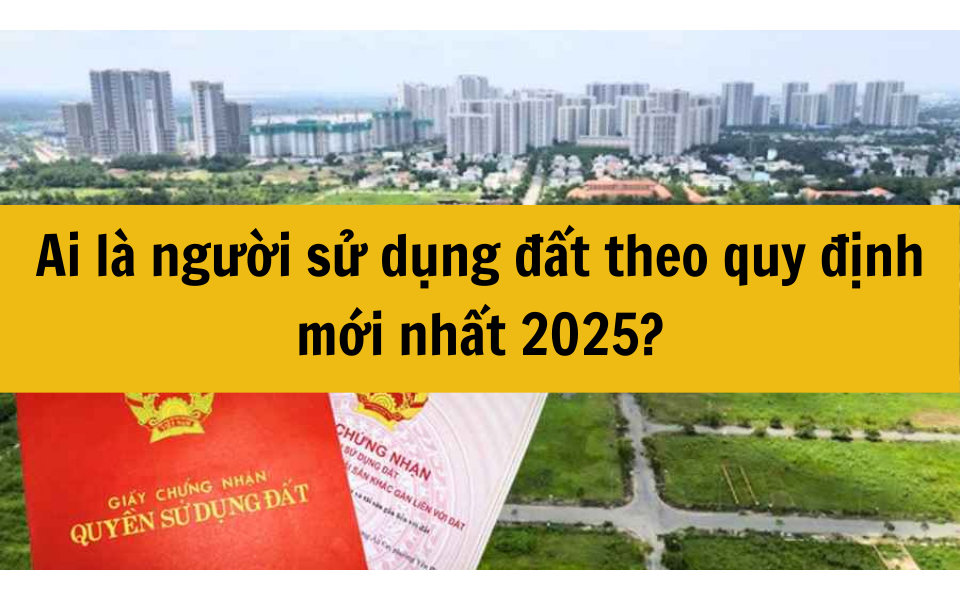
Ai là người sử dụng đất theo quy định mới nhất 2025?
Người sử dụng đất là người được Nhà nước trao quyền sử dụng đất bằng các hình thức như giao đất, cho thuê đất, công nhận quyền sử dụng đất. Vậy, người sử dụng đất gồm những đối tượng nào? Người sử dụng đất có quyền gì? 27/12/2024Quy định mới nhất 2025 về quyền và nghĩa vụ của người sử dụng đất

Quy định mới nhất 2025 về quyền và nghĩa vụ của người sử dụng đất
Người sử dụng đất là người được Nhà nước trao quyền sử dụng đất bằng các hình thức như giao đất, cho thuê đất, công nhận quyền sử dụng đất. Vậy, người sử dụng đất gồm những đối tượng nào? Người sử dụng đất có quyền gì? 27/12/2024Tranh chấp quyền sử dụng đất là gì? Quy định mới nhất 2025 về tranh chấp quyền sử dụng đất tranh chấp quyền sử dụng đất
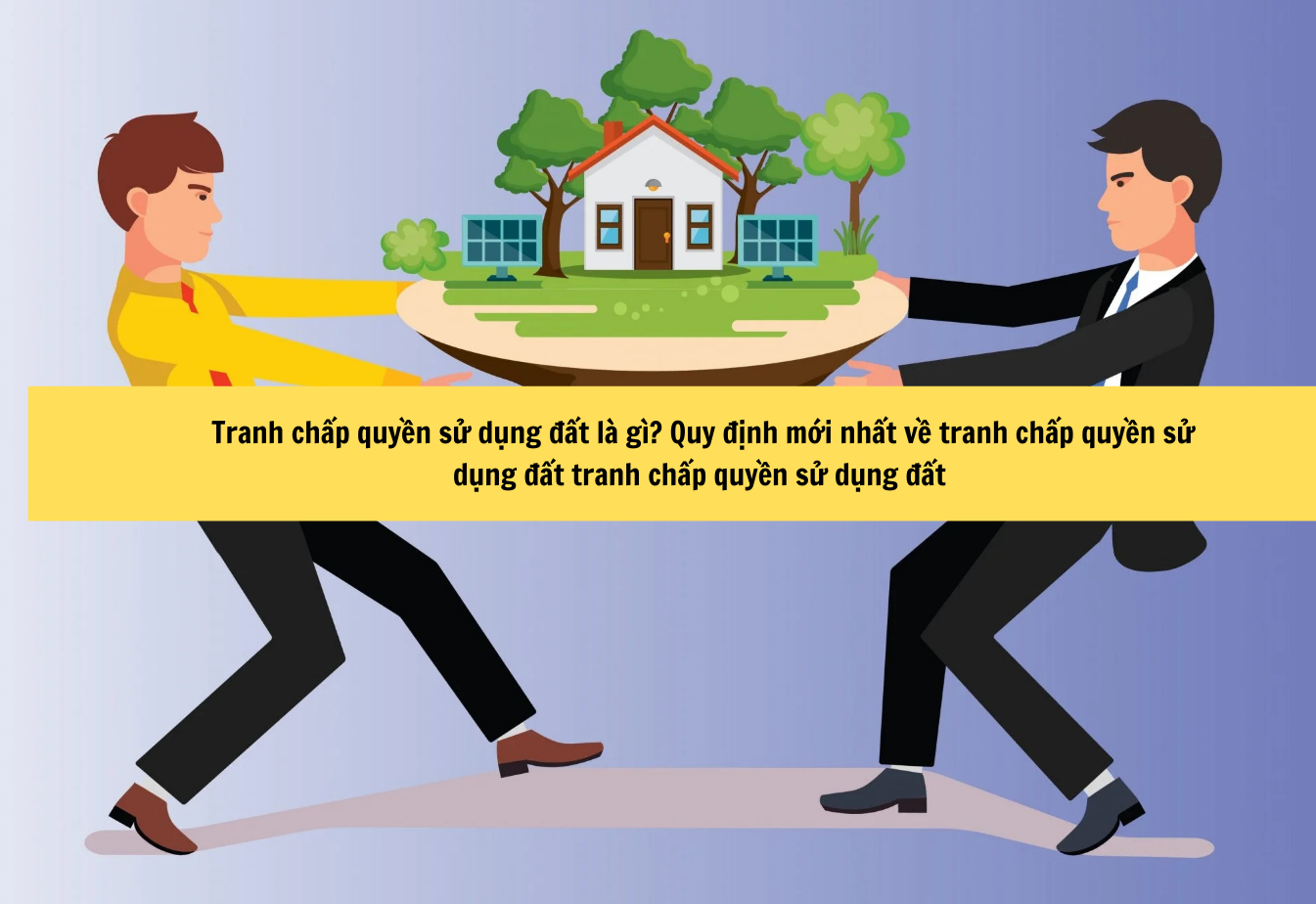
Tranh chấp quyền sử dụng đất là gì? Quy định mới nhất 2025 về tranh chấp quyền sử dụng đất tranh chấp quyền sử dụng đất
Tranh chấp quyền sử dụng đất là sự xung đột hoặc tranh cãi giữa các bên liên quan về quyền sử dụng, quản lý, hoặc sở hữu đất đai. Điều này có thể liên quan đến việc xác định ai là người có quyền sử dụng đất, quyền sở hữu đất, hoặc quyền sử dụng đất theo các quy định pháp luật. Pháp luật quy định như thế nào về vấn đề tranh chấp này? Hãy cùng tìm hiểu các quy định về tranh chấp đất đai trong bài viết dưới đây. 27/12/2024Quyền sử dụng đất có trích khấu hao không?
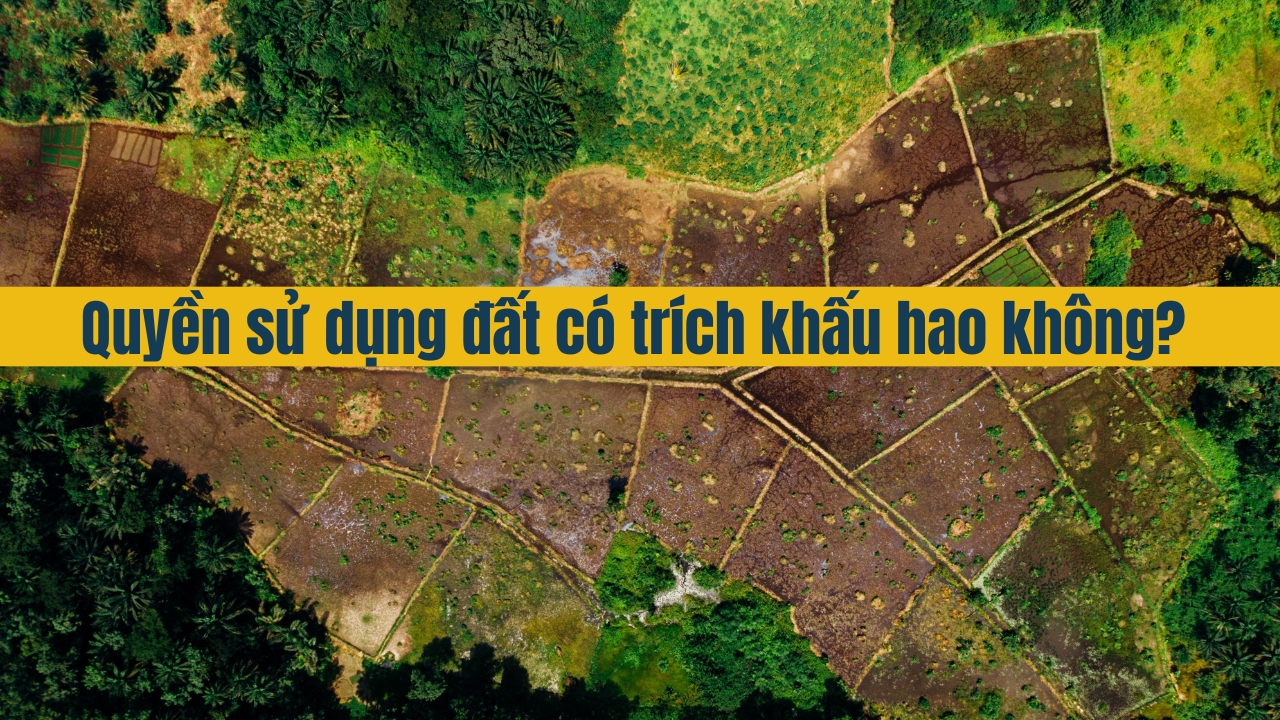
Quyền sử dụng đất có trích khấu hao không?
Quyền sử dụng đất có bị khấu hao như các tài sản khác hay không? Câu trả lời phụ thuộc vào nhiều yếu tố, đặc biệt là các quy định pháp lý và cách thức tổ chức khai thác đất đai. Trong bài viết này, chúng ta sẽ cùng tìm hiểu về những quy định liên quan đến việc khấu hao quyền sử dụng đất, cũng như sự khác biệt giữa quyền sử dụng đất và các loại tài sản khác trong hệ thống kế toán. 06/12/2024Quyền sử dụng đất của tổ chức kinh tế mới nhất 2025
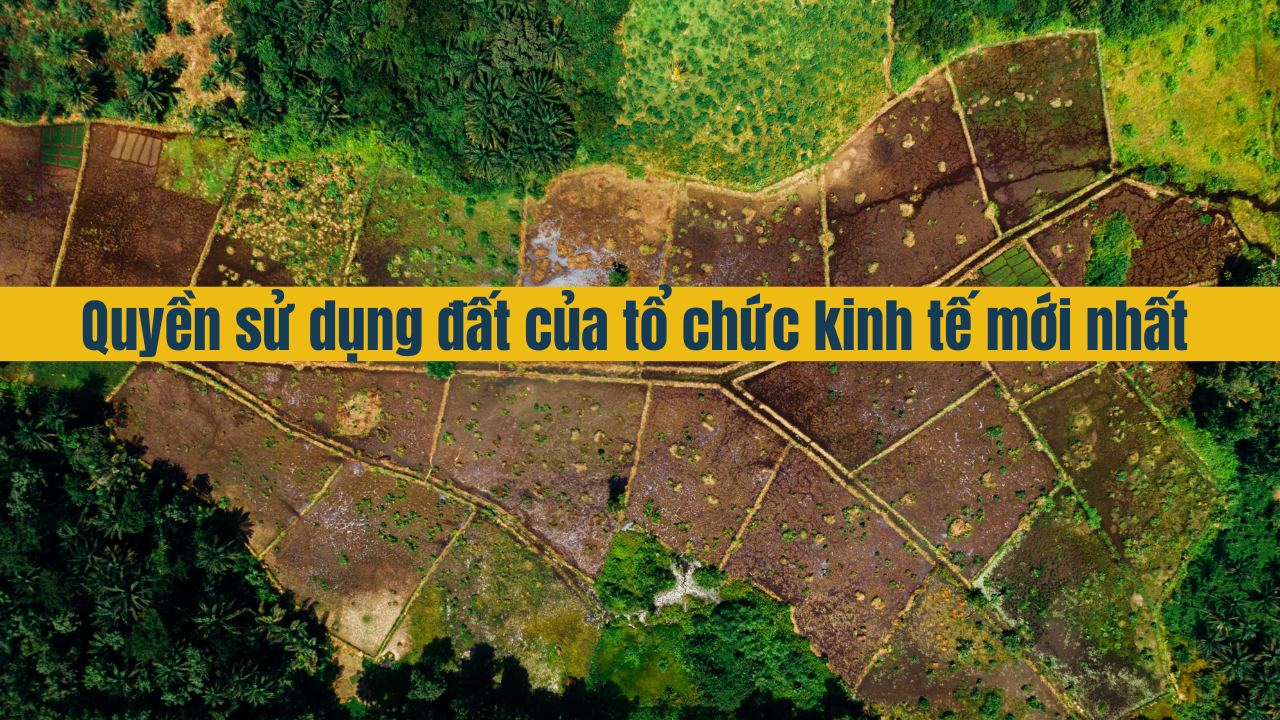
Quyền sử dụng đất của tổ chức kinh tế mới nhất 2025
Việc nghiên cứu quyền sử dụng đất của tổ chức kinh tế sẽ tập trung vào các vấn đề mới như cải cách các quy trình giao đất, cho thuê đất, và việc áp dụng công nghệ trong quản lý đất đai. Điều này sẽ không chỉ ảnh hưởng đến hoạt động kinh doanh của các tổ chức mà còn tác động sâu rộng đến chiến lược phát triển kinh tế của đất nước. Vì vậy, cùng xem hết bài viết để biết thêm thông tin về quyền sử dụng đất của tổ chức kinh tế mới nhất hiện nay. 06/12/2024Tài sản gắn liền với đất gồm những loại nào? 02 tài sản gắn liền với đất được cấp sổ đỏ mới nhất 2025

Tài sản gắn liền với đất gồm những loại nào? 02 tài sản gắn liền với đất được cấp sổ đỏ mới nhất 2025
Tài sản gắn liền với đất là những tài sản không thể tách rời khỏi đất đai, thường có giá trị lớn và chịu sự quản lý chặt chẽ của pháp luật. Những tài sản này có thể được chuyển nhượng, cho thuê, thế chấp và có ảnh hưởng trực tiếp đến quyền sử dụng đất của chủ sở hữu. Cùng với sự phát triển của các quy định pháp lý, việc cấp Giấy chứng nhận quyền sử dụng đất (sổ đỏ) đối với những tài sản này cũng ngày càng rõ ràng hơn. Vậy, trong năm 2025, những tài sản gắn liền với đất nào sẽ được cấp sổ đỏ theo quy định mới nhất? Cùng tìm hiểu 02 loại tài sản gắn liền với đất được cấp sổ đỏ hiện nay. 09/12/2024Chuyển quyền sử dụng đất rồi có đòi lại được không?

Chuyển quyền sử dụng đất rồi có đòi lại được không?
Quyền của người sử dụng đất nói chung và chuyển quyền sử dụng đất nói riêng của người sử dụng đất được quy định tại Luật Đất đai qua các thời kỳ, thể hiện chính sách về đất đai của Đảng và Nhà nước phù hợp với yêu cầu trong từng giai đoạn lịch sử nước ta. Vậy chuyển quyền sử dụng đất rồi có đòi lại được không? Bài viết sau đây sẽ làm rõ về các vấn đề này. 08/01/2025Quyền sử dụng đất là gì? Quyền sử dụng đất được xếp vào tài sản loại nào?
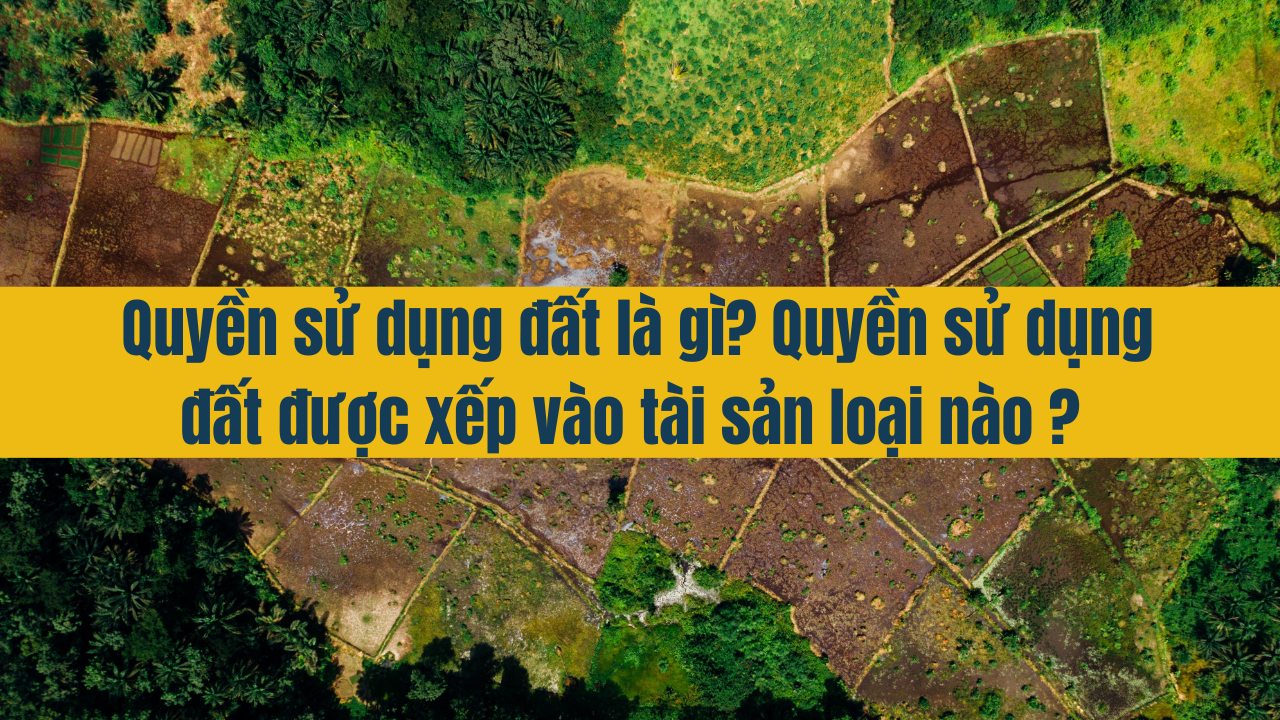
Quyền sử dụng đất là gì? Quyền sử dụng đất được xếp vào tài sản loại nào?
Quyền sử dụng đất là gì và quyền sử dụng đất được xếp vào tài sản loại nào? Quyền sử dụng đất không chỉ liên quan đến việc sử dụng một diện tích đất mà còn gắn liền với những quyền lợi, nghĩa vụ pháp lý và các giao dịch tài chính. Việc xác định quyền sử dụng đất thuộc loại tài sản nào cũng đóng vai trò quan trọng trong việc áp dụng pháp luật, bảo vệ quyền lợi hợp pháp của người sử dụng đất. 06/12/2024Chuyển quyền sử dụng đất có hiệu lực khi nào?


 Luật đất đai 2013 (Bản Word)
Luật đất đai 2013 (Bản Word)
 Luật đất đai 2013 (Bản Pdf)
Luật đất đai 2013 (Bản Pdf)